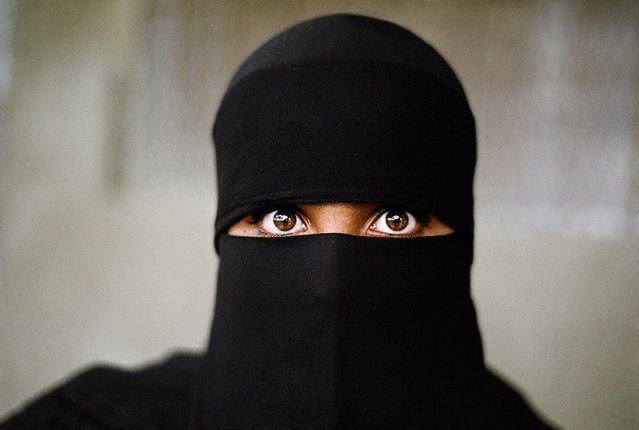13 Sep 2013 10:57:00,post received
0 comments

U.S. soldiers from 145th Field Artillery Battalion deployed from the United States fire Paladin self propelled gun during the Foal Eagle training exercise at firing point 180 at the Rodriguez Live Fire Range on March 15, 2012 in Pocheon, South Korea. (Photo by Chung Sung-Jun/Getty Images)
16 Mar 2012 11:23:00,post received
0 comments
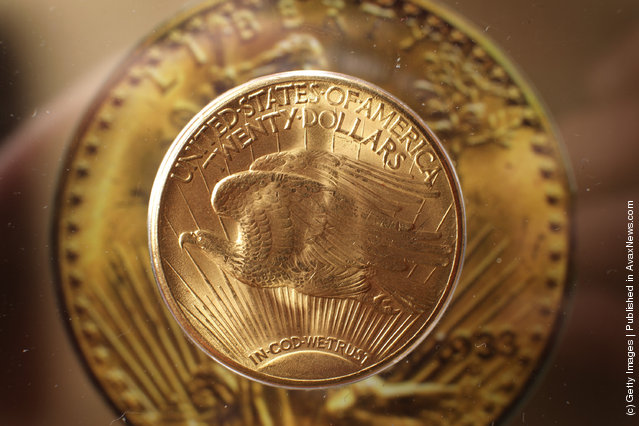
“A Double Eagle is a gold coin of the United States with a denomination of $20. (Its gold content of 0.9675 troy oz was worth $20 at the then official price of $20.67/oz). The coins are made from a 90% gold (0.900 fine = 21.6 kt) and 10% copper alloy”. – Wikipedia
Photo: A “Double Eagle” gold twenty dollar coin is displayed above a catalogue picture showing the reverse side of the coin at Goldsmith's Hall on March 2, 2012 in London, England. Nearly half a million of these coins were originally minted in the midst of the Great Depression in the US. Only 13 are known today after the rest were melted down before they ever left the US Mint, sacrificed as part of a strategy to stabalise the American economy. In 2002 a Double Eagle sold at auction for $7.6 million. (Photo by Peter Macdiarmid/Getty Images)
Photo: A “Double Eagle” gold twenty dollar coin is displayed above a catalogue picture showing the reverse side of the coin at Goldsmith's Hall on March 2, 2012 in London, England. Nearly half a million of these coins were originally minted in the midst of the Great Depression in the US. Only 13 are known today after the rest were melted down before they ever left the US Mint, sacrificed as part of a strategy to stabalise the American economy. In 2002 a Double Eagle sold at auction for $7.6 million. (Photo by Peter Macdiarmid/Getty Images)
03 Mar 2012 10:37:00,post received
0 comments
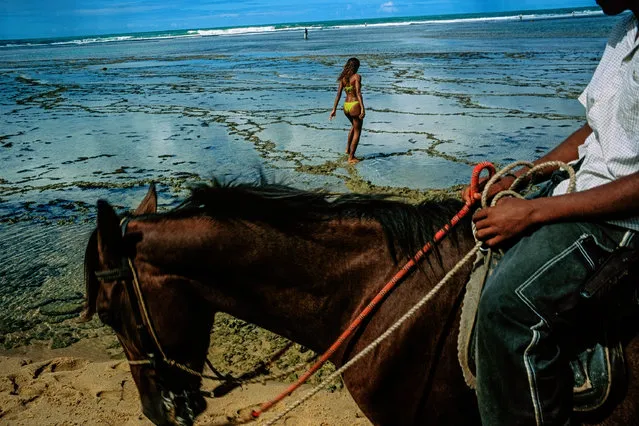
Praia du Forte, Bahia. “This was the lead picture for a National Geographic story on Bahia, because it was both mysterious as well as a “geography” picture showing where the slaves arrived from Nigeria. Beach pictures seem like they should be easy to take, but for me they are actually quite difficult. Too easy to fall into cliche. When I saw the kid coming on the horse, I quickly ran to see if I could make something with a woman in a bikini that was not a bikini shot”. (Photo by David Alan Harvey/The Guardian)
20 Aug 2016 11:35:00,post received
0 comments
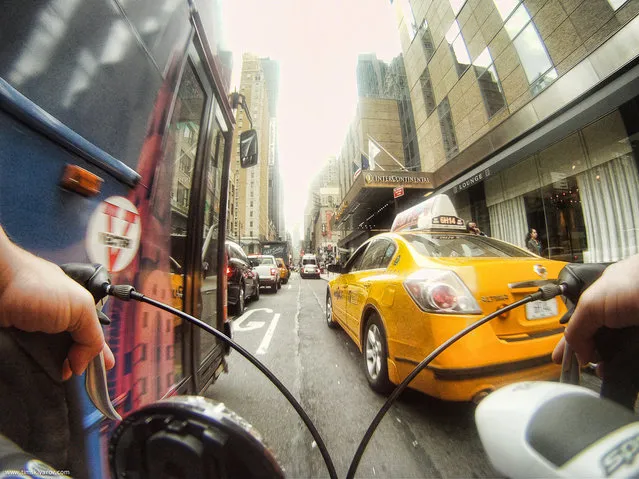
My transport of choice in NYC is definitely a road bike. When you cycle on the streets you see city and it’s habitants in a very different point of view. Let me share with you some photos I took last year – NYC through the eyes of a road bike.
Tim Sklyarov
06 Jan 2014 11:27:00,post received
0 comments
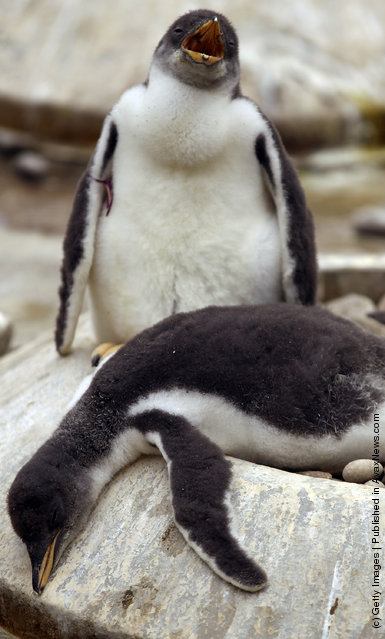
Adult gentoo penguins keep an eye on their newly born chick at Edinburgh Zoo on June 10, 2011 in Edinburgh, Scotland. The gentoo chicks which started hatching in early May are looked after by both parents who regurgitate part digested food. When the chicks are hungry they peck the beaks of their parents to signal feeding time. (Photo by Jeff J Mitchell/Getty Images)
11 Jun 2011 12:26:00,post received
0 comments
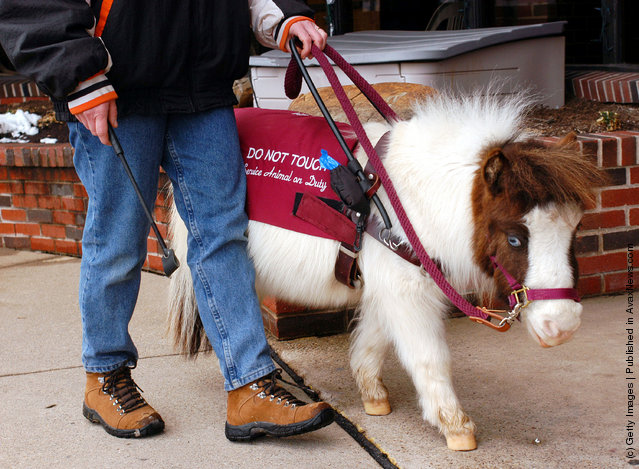
“A guide horse is an experimental mobility option for blind people who do not wish to or cannot use a guide dog. They are provided by The Guide Horse Foundation, founded in 1999 to provide miniature horses as assistance animals to blind users living in rural environments”. – Wikipedia
Photo: Shari Bernstiel, of Lansdale, Pennsylvania is helped along the sidewalk by Tonto, her guide horse March 19, 2004 in Lansdale, Pennsylvania. Tonto, a minature horse who went through one year of training, acts as Sheri's seeing eye dog and is one of three working guide horses in the United States. (Photo by William Thomas Cain/Getty Images)
Photo: Shari Bernstiel, of Lansdale, Pennsylvania is helped along the sidewalk by Tonto, her guide horse March 19, 2004 in Lansdale, Pennsylvania. Tonto, a minature horse who went through one year of training, acts as Sheri's seeing eye dog and is one of three working guide horses in the United States. (Photo by William Thomas Cain/Getty Images)
20 Jun 2011 14:05:00,post received
0 comments
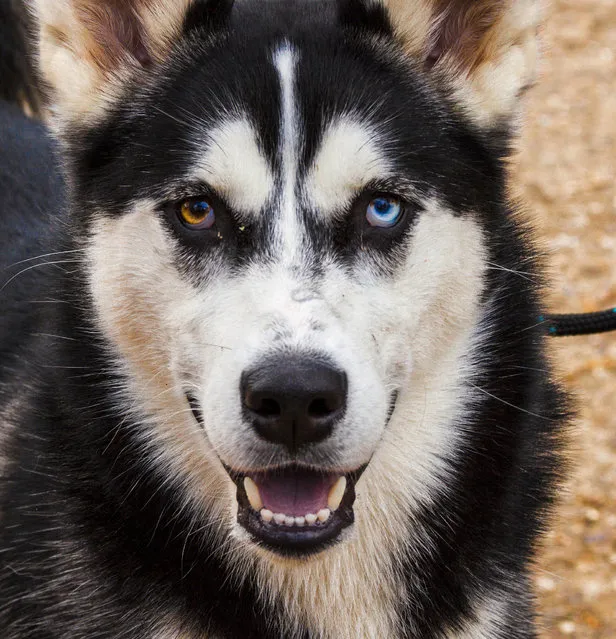
“In anatomy, heterochromia refers to a difference in coloration, usually of the iris (but also of hair or skin). Although infrequently seen in humans, complete heterochromia is more frequently observed in other species, where it almost always involves one blue eye”. – Wikipedia (Photo by StooMathiesen)
24 Jun 2012 12:47:00,post received
0 comments
Last searches:

